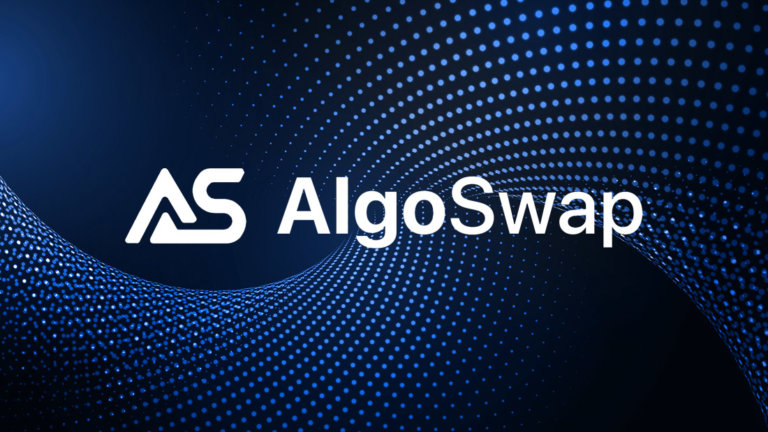Introduction
The decentralized finance (DeFi) ecosystem has seen exponential growth in recent years, with innovative protocols reshaping how users trade, lend, and borrow digital assets. Among these groundbreaking platforms is AlgoSwap, a next-generation decentralized exchange (DEX) that leverages advanced algorithms to optimize trading efficiency, reduce slippage, and enhance liquidity provision.
In this article, we will explore AlgoSwap in depth, covering its core features, technological advantages, benefits for traders and liquidity providers, and its potential impact on the broader DeFi landscape.
What is AlgoSwap?
AlgoSwap is an algorithmic decentralized exchange designed to facilitate seamless token swaps with minimal slippage and maximum capital efficiency. Unlike traditional Automated Market Makers (AMMs) like Uniswap or PancakeSwap, which rely on constant product formulas (x * y = k), AlgoSwap integrates dynamic pricing algorithms and concentrated liquidity models to improve trade execution.
Built on a high-performance blockchain (such as Ethereum Layer 2, Solana, or Algorand), AlgoSwap aims to solve key challenges in DeFi, including:
-
High slippage in large trades
-
Inefficient capital utilization in liquidity pools
-
Front-running and MEV (Miner Extractable Value) attacks
By incorporating smart order routing, customizable liquidity positions, and advanced algorithmic strategies, AlgoSwap provides a superior trading experience for both retail and institutional participants.
Key Features of AlgoSwap
1. Dynamic Liquidity Allocation
Unlike traditional AMMs where liquidity is spread uniformly across a price range, AlgoSwap allows liquidity providers (LPs) to concentrate their funds around expected price ranges. This approach, inspired by Uniswap V3, significantly improves capital efficiency, meaning LPs can earn higher fees with less locked capital.
2. Reduced Slippage via Algorithmic Pricing
AlgoSwap employs adaptive pricing algorithms that adjust in real-time based on market conditions. This minimizes price impact for large orders, making it an attractive option for whales and institutional traders.
3. Multi-Chain Compatibility
To maximize accessibility, AlgoSwap is designed to operate across multiple blockchains, including:
-
Ethereum (and Layer 2 solutions like Arbitrum & Optimism)
-
Solana (for high-speed, low-cost transactions)
-
Algorand (for near-instant finality and scalability)
This cross-chain functionality ensures users can trade assets seamlessly without being constrained by a single network’s limitations.
4. MEV Protection
One of the biggest issues in DeFi is Maximal Extractable Value (MEV), where bots exploit transaction ordering to extract profits at the expense of traders. AlgoSwap mitigates this through:
-
Fair transaction ordering
-
Private mempool transactions
-
Batch auctions for large trades
5. Governance & Tokenomics
AlgoSwap is governed by a decentralized autonomous organization (DAO), where token holders vote on key protocol upgrades, fee structures, and treasury allocations. The native $ALGO token serves multiple purposes:
-
Staking rewards for liquidity providers
-
Governance rights for protocol decisions
-
Fee discounts for active traders
How AlgoSwap Works: A Technical Deep Dive
1. Liquidity Provision & Concentrated Ranges
Liquidity providers on AlgoSwap can choose custom price ranges for their deposits, allowing them to allocate capital more efficiently. For example:
-
If ETH is trading between $1,800 and $2,200, an LP can focus liquidity within this range instead of spreading it across all possible prices.
-
This leads to higher fee earnings per dollar deposited compared to traditional AMMs.
2. Smart Order Routing (SOR)
When a user initiates a swap, AlgoSwap’s Smart Order Router scans multiple liquidity sources (including its own pools and external DEXs) to find the best possible price. This ensures traders get optimal execution without manually splitting orders.
3. Algorithmic Price Adjustments
Instead of relying solely on the x * y = k model, AlgoSwap uses time-weighted average pricing (TWAP) and oracle feeds to reduce volatility and manipulation risks.
4. Gas Optimization
By leveraging Layer 2 solutions and efficient smart contract design, AlgoSwap minimizes transaction costs, making it viable for small traders.
Benefits of Using AlgoSwap
For Traders:
✅ Lower slippage on large trades
✅ Better pricing via algorithmic adjustments
✅ Cross-chain swaps without bridges
✅ MEV-resistant transactions
For Liquidity Providers:
💰 Higher capital efficiency (earn more with less)
💰 Flexible fee tiers (choose between low-risk stablecoin pools or high-volatility assets)
💰 Governance participation via $ALGO staking
For the DeFi Ecosystem:
🌍 Increased liquidity depth across multiple chains
🌍 Reduced reliance on centralized exchanges
🌍 Innovation in AMM design
Potential Challenges & Risks
While AlgoSwap presents numerous advantages, it also faces some hurdles:
1. Impermanent Loss (IL) in Concentrated Liquidity
LPs who set narrow price ranges may suffer higher IL if the asset moves outside their selected bounds.
2. Smart Contract Vulnerabilities
Like all DeFi protocols, AlgoSwap must undergo rigorous audits to prevent exploits.
3. Competition from Established DEXs
Uniswap, Curve, and PancakeSwap dominate the market; AlgoSwap must differentiate itself to attract users.
The Future of AlgoSwap
AlgoSwap is poised to become a major player in DeFi by:
-
Expanding to more blockchains (e.g., Cosmos, Polkadot)
-
Integrating with institutional trading tools
-
Introducing derivatives and leveraged trading
With continuous innovation, AlgoSwap could redefine how decentralized exchanges operate, making trading faster, cheaper, and more efficient for everyone.
Conclusion
AlgoSwap represents the next evolution of decentralized exchanges, combining algorithmic pricing, concentrated liquidity, and cross-chain interoperability to deliver a superior trading experience. By addressing key pain points like slippage, MEV, and capital inefficiency, it has the potential to compete with industry giants like Uniswap and SushiSwap.
As DeFi continues to grow, platforms like AlgoSwap will play a crucial role in shaping a more efficient, secure, and user-friendly financial ecosystem. Whether you’re a trader, liquidity provider, or DeFi enthusiast, AlgoSwap is a protocol worth watching.

